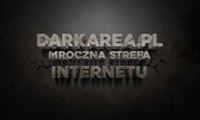The Offensive Art is an arch and sometimes caustic look at the art of political satire as practiced in dematic, monarchical, and authoritarian societies around the world over the past century-together with the efforts by governmental, religious, and corporate authorities to suppress it by censorship, intimidation, policy, and fatwa. Examples are drawn from the full spectrum of satiric genres, including novels, plays, verse, songs, essays, cartoons, cabarets and revues, movies, television, and the Internet. The multicultural and multimedia breadth and historical depth of Freedman's comparative approach frames his novel assessment of the role of political satire in today's post-9/11 world, and in particular the cross-cultural controversies it generates, such as the global protests against the Jyllands-Posten cartoons.
In a tongue-in-cheek style peppered with the world's best one-liners from the last century, The Offensive Art recounts the acrimonious and often perilous cat-and-mouse games between political satirists and their censors and inhibitors through the last century in America (especially FDR, LBJ, Nixon, Reagan, Clinton, and Bush II and in wartime), Britain (especially Churchill, Thatcher, Blair and the Royals), Germany (Hitler to the present), Russia (Stalin to the present), China (Mao to the present), India (from the Raj on), and the Middle East (from 1920s Egypt to today). Freedman focuses on the role and transformation of satire during shifts from authoritarian to dematic systems in such places as South Africa, Argentina, and Eastern Europe. He surveys the state of satire throughout the world today, identifying the most dangerous countries for practitioners of the offensive art, and presents his findings as to the political efficacy of satire in provoking change.
![The Offensive Art - [AUDIOBOOK]](https://i124.fastpic.org/big/2025/0115/da/57556f9a046175e2b874403b94fe4ada.png)









